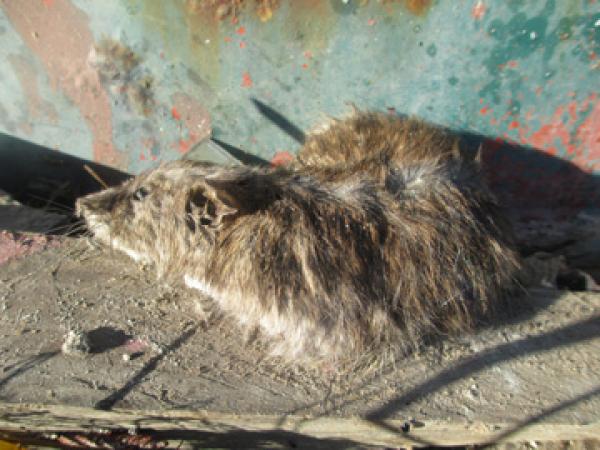Khayelitsha’s rat problem: City’s dumps rubbish next to shacks

Khayelitsha residents have to contend with rat infestations as a result of a City dumping container.
Nosive Steli has lived in Khayelitsha SST Town II section since 2009. According to Steli, in 2012 a city dumping container was placed outside their home in 2012. She came back from work one day to find the container. It has made her family’s life a nightmare.
Steli explained that the container is cleaned up on a daily basis by the municipality workers. They collect the rubbish dumped outside and around the container and place it inside, and then a big truck comes and collects the rubbish. The container is then closed and locked up.
The problem is that as soon as the cleaners go people start to come and dump their rubbish around the container. “They come from as far as Makhaza, Mandela Park and inside and around Town II to dump their rubbish here”, exclaimed Steli.
“The problem is that big rats invade our homes due to the rubbish container, rats the size of cats. They eat and destroy everything! I used to buy a lot of vegetables and place them in the vegetable rack but I have since stopped buying them because the rats eat my vegetables.”
Steli described how the rats burrowed holes from the outside into her house and now have easy access. The rats have destroyed her furniture and put holes in her curtains.
“I want this container gone from here and for the City of Cape Town to come collect their container from my backyard and place it somewhere else far away from me because I have to fight constantly with people that throw dead dogs, sanitary towels, dirty nappies and even rotten meat here that stinks up the whole place. One day the wind blew a dirty pad onto my doorstep and I caught my little baby niece sucking on it!”, explained Steli.
She recalled the day when a man rolled his bin and dumped the insides of a cow (called binnegoed on the Cape Flats) on the site and how immediately the whole place was filled with an unbearable stench. She jumped out from her seat without even putting on shoes to see who had dumped the stinking rubbish. When she saw a man emptying out the bin she confronted him. When she asked what the man was dumping there he proceeded to explain that there was a funeral at the house he came from about two days ago and that he was dumping the binnegoed left over from the funeral ceremony. Steli then pleaded that he bury the binnegoed underneath the ground because of the strong smell and flies it was causing. The man said he would return to do so after he retrieved a shovel from his house. Steli, however, did not trust that the man would come back so she asked him to leave his bin as collateral. He refused and left without burying the waste. Steli explained how she searched Town II looking for the house that had a funeral until she found and confronted the man who had dumped the binnegoed. The mother of the house called her inside. When she explained what the man had done the mother ordered him to go back and bury the waste.
“I have to fight and put my life in danger because of this container and dumping site. Who knows what that family could have done to me at that house had the mother of the house not understood where I was coming from.”
Steli saw an opportunity to seek help when Mayor Patricia De Lille was addressing delegates not far from her shack during a recent march for street lights in Lansdowne Road. That’s when Steli got off her couch and tried to convey her distress. She had hoped to talk to a city official, but instead told her story to a Social Justice Coalition member who was there.
Ernest Sonnenberg, Mayoral Committee for Utility Services, said finding adequate space for solid waste storage containers for informal settlements was a challenge due to limited space. He explained that containers have to be within walking distance for the municipality workers who pick up waste from each home. He said that when suitable places for the storage containers were identified, the City would consult with community representatives. When asked about the rat problem caused by these containers, Sonnenberg said his department had requested the City’s health department to investigate the matter.
A woman noticed when we were taking pictures of the dumping site and came running towards us pleading that we try to do something about it as it is a serious problem in the area. Nomfaneleko Mangaliso, who stays not far from the container, told us how they constantly ask people not to dump their rubbish there and are met with retorts that they should get a brick house and move to the suburbs.
Support independent journalism
Donate using Payfast

Don't miss out on the latest news
We respect your privacy, and promise we won't spam you.
Next: Residents in dangerous Gugs block of flats to be relocated
Previous: Overcoming disability: why I love sport

This article is licensed under a Creative Commons Attribution-NoDerivatives 4.0 International License.
